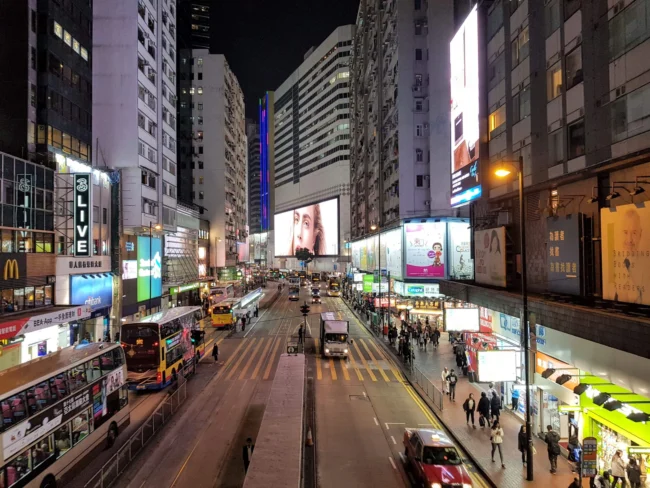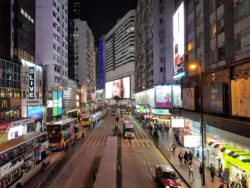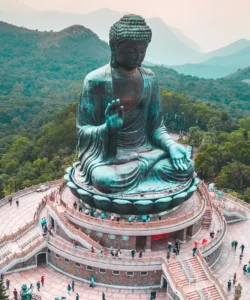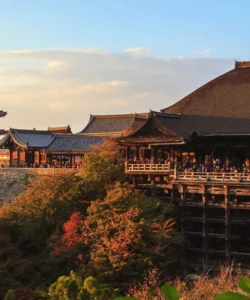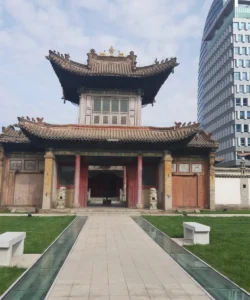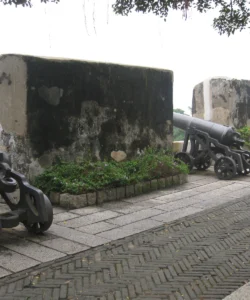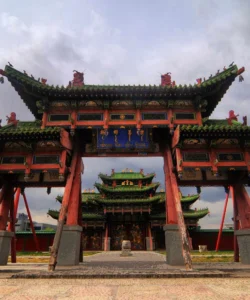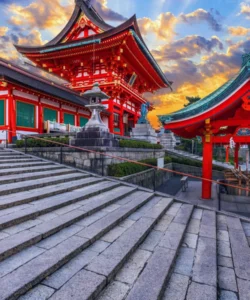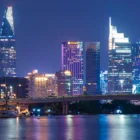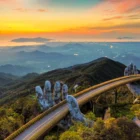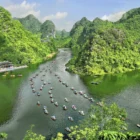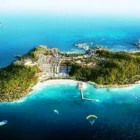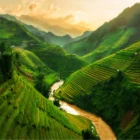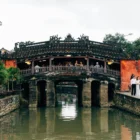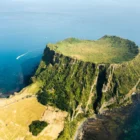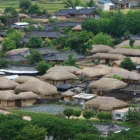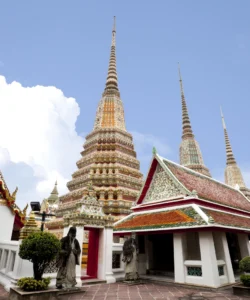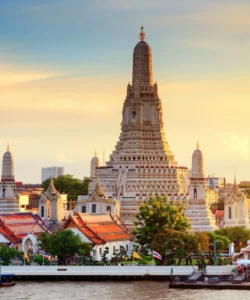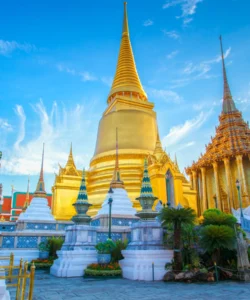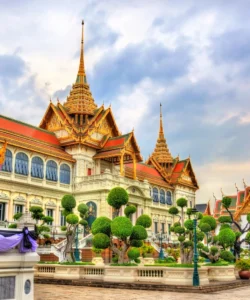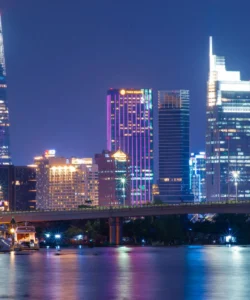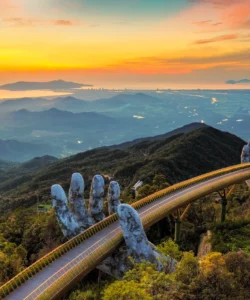Causeway Bay is one of Hong Kong’s most dynamic and densely populated districts, located on the northern shore of Hong Kong Island. Renowned as a major shopping, dining, and entertainment hub, it’s a district that pulses with non-stop energy, attracting both locals and international visitors seeking the latest trends and a vibrant urban experience.
Name: Causeway Bay (銅鑼灣, Tùnglòwàan). The name literally means “Copper Gong Bay,” referring to its historical past as a curved bay.
Address: Causeway Bay is an area that straddles the border of the Eastern and Wan Chai districts on Hong Kong Island. Key areas include the vicinity of Times Square (1 Matheson Street) and Sogo Department Store (555 Hennessy Road).
How to get there:
Causeway Bay boasts excellent public transport connectivity:
- By MTR (Mass Transit Railway): The most convenient way. Take the Island Line to Causeway Bay Station. The station has numerous exits that lead directly into major shopping malls like Sogo (Exit D) and Times Square (Exit A), as well as other landmarks.
- By Tram (Ding Ding Tram): The historic double-decker trams run along Hennessy Road and Yee Wo Street in Causeway Bay, offering a scenic and affordable way to get around and experience the district.
- By Bus/Minibus: Numerous public bus and minibus routes serve Causeway Bay, connecting it to various parts of Hong Kong Island and beyond.
- By Taxi: Taxis are readily available throughout Hong Kong and can drop you off at any desired point in Causeway Bay.
Landscape and Architecture:
Causeway Bay’s landscape is defined by its extreme urban density and a constant verticality, showcasing both modern and some historical elements:
- High-Rise Density: The dominant feature is the proliferation of high-density, multi-story buildings, including towering shopping malls, hotels, and residential blocks packed closely together. This creates a thrillingly intense, vertical urban canyon effect.
- Shopping Mall Architecture: Gleaming glass and steel characterize the facades of major shopping centers like Times Square, Hysan Place, Sogo, and Lee Gardens. These malls are often designed with impressive atriums, escalators, and extensive retail spaces that extend vertically.
- “Vertical Shopping”: Due to incredibly high retail rents, businesses are often forced to occupy upper floors of buildings, leading to a unique “vertical shopping” experience where independent boutiques, restaurants, and hidden gems are found many floors above ground level.
- Neon and LED Signage: The streets are a dazzling display of bright neon and LED signs, especially at night, which contribute to the district’s energetic and iconic urban visual.
- Victoria Park: In stark contrast to the surrounding urban density, Victoria Park, Hong Kong Island’s largest public park, offers a significant green oasis on the eastern edge of Causeway Bay. It features open lawns, sports facilities, and quiet paths, providing a crucial lung for the district.
- Historical Remnants: Despite the relentless modernization, hints of Causeway Bay’s past as a fishing village remain:
- The Noonday Gun: A historical cannon fired daily at noon by Jardine Matheson, a tradition dating back to the 19th century, located by Victoria Harbour.
- Tin Hau Temple: A traditional Chinese temple dedicated to the Goddess of the Sea, located near the modern Hong Kong Central Library, recalling the area’s coastal history.
- Reclaimed Land: Much of Causeway Bay’s current land area is built on reclaimed land, a testament to Hong Kong’s constant expansion and development.
What makes it famous:
Causeway Bay is famous for:
- Shopping Mecca: It is undeniably one of Hong Kong’s premier and most intense shopping districts, known for having some of the highest retail rents in the world. It caters to all budgets, from luxury international brands in high-end malls to trendy local boutiques and bargain stalls in places like Jardine’s Crescent.
- 24/7 Energy: The district is known for its non-stop, bustling energy, with many shops and restaurants staying open late into the night. It’s a place where the pulse of Hong Kong feels incredibly strong.
- Youth Culture and Fashion: It’s a popular social spot for young people and a center for trendy fashion, showcasing both global and local styles.
- Diverse Dining: Causeway Bay offers an incredible variety of dining options, from Michelin-starred restaurants to bustling street-side eateries (dai pai dongs), local Hong Kong-style cafes (cha chaan tengs), and international cuisine.
- Noonday Gun: The daily firing of the historic Noonday Gun is a unique and quirky tradition that draws a small crowd.
- Times Square Hong Kong: Its outdoor piazza is a popular gathering point and often hosts events and promotions, reminiscent of its New York namesake.
- Victoria Park: A significant green space for recreation and a venue for major events like the annual Lunar New Year Fair and the vigil for the Tiananmen Square massacre.
Differences from some other wonders:
Causeway Bay, while a dynamic urban district, differentiates itself from other major Hong Kong attractions and global city centers in several ways:
- Shopping Intensity and Density: Compared to other shopping districts like Tsim Sha Tsui or Central, Causeway Bay is often described as having an even higher concentration and intensity of retail options per square meter. Its “vertical shopping” culture is a distinct response to its incredibly high land value. Tsim Sha Tsui might be more spread out with broad boulevards, while Central blends high-end shopping with finance.
- Focus on Mass Market and Trendy Fashion: While Central has high-end luxury and Tsim Sha Tsui a mix, Causeway Bay has a particularly strong emphasis on trendy fashion, mass-market brands, and Japanese department stores (like Sogo), often appealing to a younger, more fashion-conscious demographic looking for the latest styles.
- Lack of Prominent Waterfront Promenade: Unlike Tsim Sha Tsui, which boasts the iconic Tsim Sha Tsui Promenade with its direct harbour views, Causeway Bay’s waterfront access is more limited due to the presence of the typhoon shelter and other industrial/commercial uses, making it less of a classic “promenade” district. The Noonday Gun is located here, but it’s a specific, smaller area.
- Victoria Park as a Green Lung: The presence of Victoria Park within the heart of such an intensely urban and commercial district is a significant distinguishing feature, providing a large, accessible green space that contrasts sharply with the surrounding concrete jungle. Many other shopping districts might have smaller parks or plazas, but not a park of this scale.
- Residential and Commercial Blend: While it’s a commercial hub, Causeway Bay also integrates a significant residential population, contributing to its continuous 24/7 energy, as people live, work, and shop within the same compact area.
In essence, Causeway Bay is a hyper-charged microcosm of Hong Kong’s urban dynamism, a world-leading retail powerhouse that constantly buzzes with activity, reflecting the city’s relentless energy and passion for commerce and fashion.
